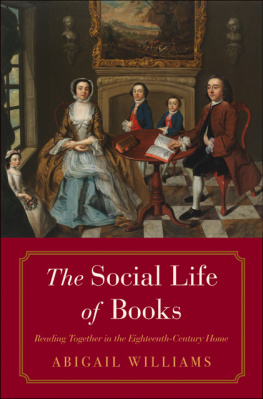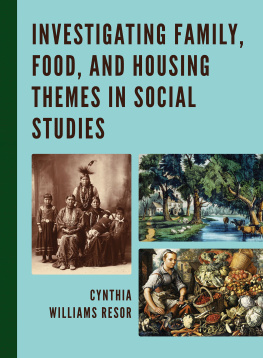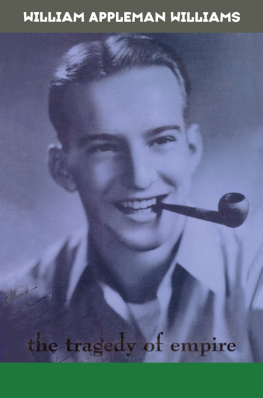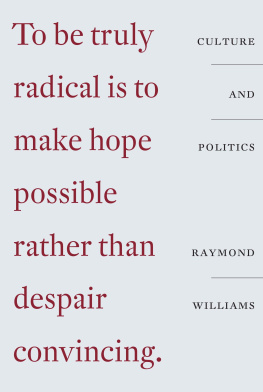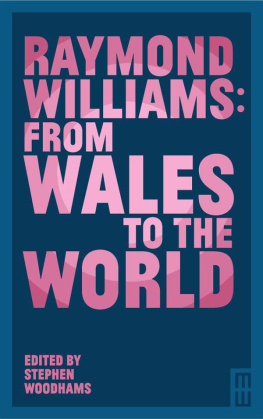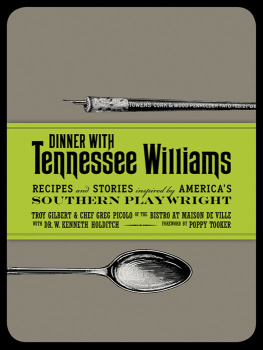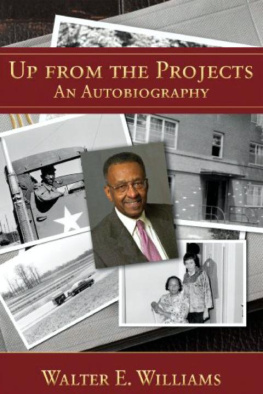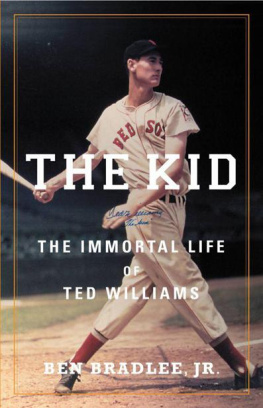The Social Life of Books

THE LEWIS WALPOLE SERIES
IN EIGHTEENTH-CENTURY CULTURE AND HISTORY
The Lewis Walpole Series, published by Yale University Press with the aid of the Annie Burr Lewis Fund, is dedicated to the culture and history of the long eighteenth century (from the Glorious Revolution to the accession of Queen Victoria). It welcomes work in a variety of fields, including literature and history, the visual arts, political philosophy, music, legal history, and the history of science. In addition to original scholarly work, the series publishes new editions and translations of writing from the period, as well as reprints of major books that are currently unavailable. Though the majority of books in the series will probably concentrate on Great Britain and the Continent, the range of our geographical interests is as wide as Horace Walpoles.

Published with assistance from the Annie Burr Lewis Fund.
Copyright 2017 by Yale University.
All rights reserved.
This book may not be reproduced, in whole or in part, including illustrations, in any form (beyond that copying permitted by Sections 107 and 108 of the U.S. Copyright Law and except by reviewers for the public press), without written permission from the publishers.
Yale University Press books may be purchased in quantity for educational, business, or promotional use. For information, please e-mail (U.K. office).
Set in Fournier type by IDS Infotech Ltd., Chandigarh, India.
Printed in the United States of America by
ISBN 978-0-300-20829-0
Library of Congress Control Number 2016958764
A catalogue record for this book is available from the British Library.
This paper meets the requirements of ANSI/NISO Z39.48-1992 (Permanence of Paper).
10 9 8 7 6 5 4 3 2 1
Contents
Acknowledgments
I wish I could say I had written this book at the kitchen table, surrounded by the crumbs and chaos of family life. But projects like this one are really born of solitary hours in underfunded local record offices, or in scholarly research libraries. I am enormously grateful to all the archivists who helped me find and understand the materials in their collections, and especially those in the record offices in Sheffield, Warwick, Somerset, West Devon, Edinburgh, and Gloucester. In rare book libraries, I thank in particular, Clive Hurst, Sarah Wheale, Andrew Honey, and the staff at the Bodleian library, Geoff Day and the library of Winchester College, and Ralph McLean at the National Library of Scotland. I have learnt a lot too from working with colleagues in museums. My understanding of material culture has been energized by the work I have done with Giovanna Vitelli and the university engagement programme at the Ashmolean Museum, and also by my valuable collaboration with Hannah Fleming, Elyse Bell, and others at the Geffrye Museum in London. My research time was funded by the British Academy and the Leverhulme Trust, and without it I couldnt have written the book. St. Peters College and the Faculty of English have been generous and supportive employers.
One of the most enjoyable parts of doing this project has been my time with the friends and family who hosted me on my research trips, and made my evenings such fun: Penny and Tony Cronin, Robert and Marion Hadaway, Eleanor Collins and Fraser Macdonald, Rob Wyke, Bridget Thornborrow and Mark Heap. I have also been part of two stimulating AHRC research groups, the Voices and Books network led by Jenny Richards and Richard Wistreich, and Uses of Poetry led by Kate Rumbold. Both have fed my thinking in significant ways, and given full meaning to the social acquisition of knowledge. My friends and my former students in my two book groups in Oxford and London have reminded me repeatedly how enjoyable it is to talk about books as well as read them. Other friends and colleagues have reviewed chapters or drafts for me, and I am indebted here to Adam Smyth, Ros Ballaster, Alex Harris, Stacey McDowell, Ros Powell, and Christy Ford, as well as to the anonymous Yale readers and my editors, Chris Rogers and Sarah Miller. Many of my mistakes and most annoying verbal tics have been gently ironed out by the copyediting of Hilary Hammond and Paul Betz. I have had brilliant research assistants, who have read, corrected and shown me things I couldnt have found for myself: Elyse Bell, Adam Bridgen, Christy Ford, Peter Huhne, and Rebekah King. Much of what I have learnt about eighteenth-century reading has been built on the rich scholarship of the late Stephen Colclough, to whom I owe a huge debt. Thank you to Linda Bree, Antony Buxton, Bridget Clarke, Barbara Crosbie, Matthew Grenby, Emma Walshe, and Charlie Withers, amongst others, for sharing your research treasures.

One of my readers criticisms about an early draft of the book was that it didnt adequately recognize unhappiness and discord in the home. Thank you to Giles, Eliza, William, Mum, and Laura for enabling me to make that elementary error.
The Social Life of Books
Introduction
Home Improvements
On 15 April 1802, Dorothy and William Wordsworth took one of the most significant walks in literary history. They set out in blustery weather, across the fells near Ullswater in the Lake District. It was misty and mild, with a strong wind, and the first signs of spring were emerging in the hedgerows. Passing Gowbarrow Park, they saw a few wild daffodils, and then as they walked along, they discovered a whole belt of them, almost as broad as a road. Dorothys journal entry reads:
I never saw daffodils so beautiful they grew among the mossy stones about & about them, some rested their heads upon these stones as on a pillow for weariness & the rest tossed & reeled & danced & seemed as if they verily laughed with the wind that blew upon them over the Lake, they looked so gay ever glancing ever changing.
Brother and sister continued their walk and later found refuge in a tavern, where they enjoyed a robust meal of ham and potatoes. After supper, Dorothy recounts: William was sitting by a bright fire when I came downstairs. He soon made his way to the Library piled up in a corner of the window. He brought out a volume of Enfields Speaker, another miscellany, & an odd volume of Congreves plays. We had a glass of warm rum & waterwe enjoyed ourselves & wished for Mary.
There is much to say about this record of a day. Dorothys diary entry, fuller than the extract quoted here, was to provide the basis for her brothers more celebrated poem I wandered lonely as a cloud, written two years later, in which he describes the daffodils as joyful companions to a solitary poet-walker. The poem became perhaps the most famous lyric in English literature, the embodiment of the romantic celebration of imagination and nature. Dorothys diary, on the other hand, is less known outside academic circles. What is also striking is that the poem and the diary represent two very different kinds of literary activity. In writing about the daffodils, Wordsworth emphasised the solipsistic aspect of his experience: the solitary, absorptive, silent nature of imagination, and the images that flash upon the inward eye. But his sisters journal entry, behind that poem, records the mutual enjoyment of the walk and its daffodils, and it ends, significantly, with communal domestic entertainment. Brother and sister sit by the fire in a tavern after a long day out, taking down random popular collections of verse and drama from the shelves, and reading them aloud together over a glass of rum before bed. Dorothys version, written in a diary that she often read aloud to her brother, is a story about shared experience.
Next page
